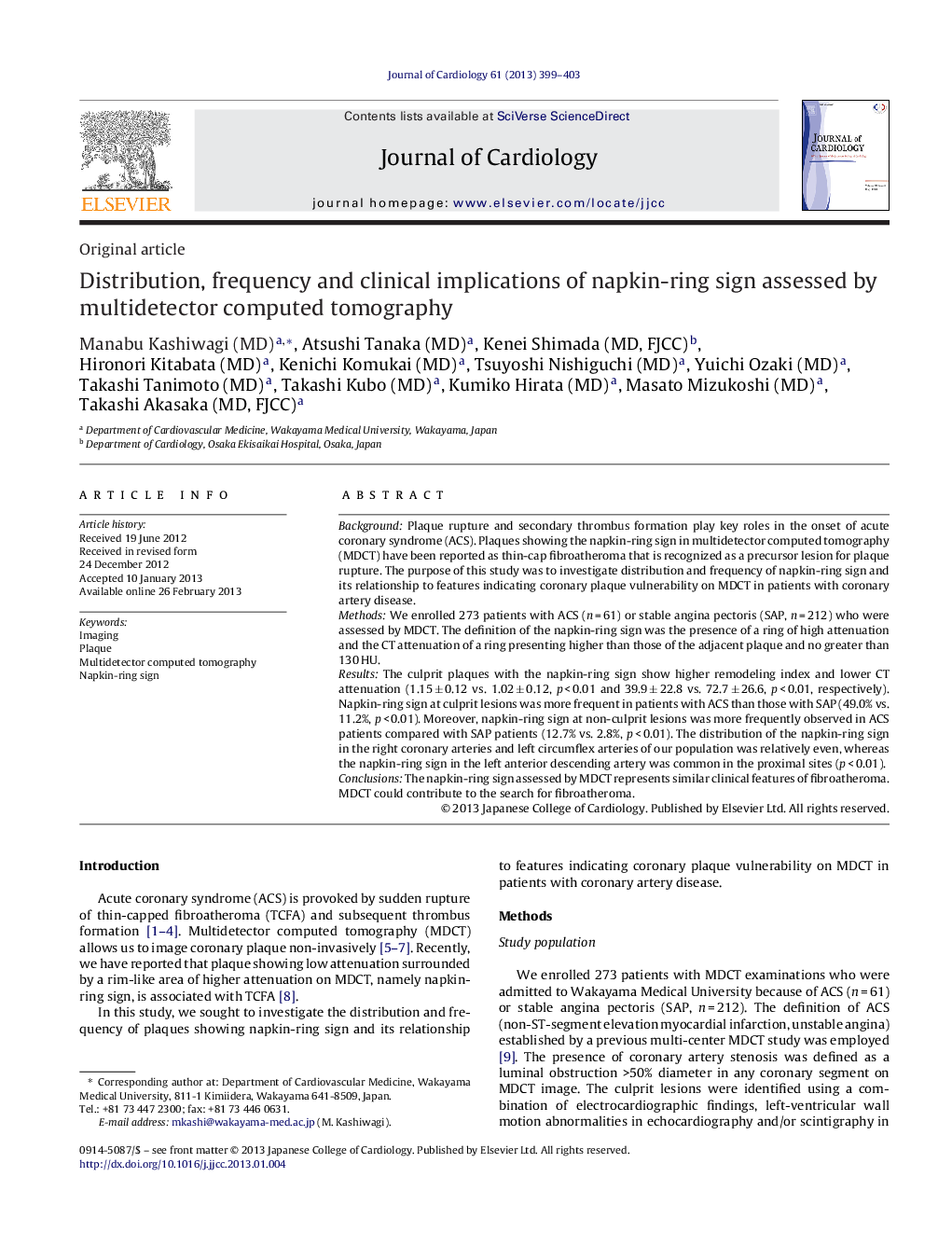| Article ID | Journal | Published Year | Pages | File Type |
|---|---|---|---|---|
| 5984332 | Journal of Cardiology | 2013 | 5 Pages |
BackgroundPlaque rupture and secondary thrombus formation play key roles in the onset of acute coronary syndrome (ACS). Plaques showing the napkin-ring sign in multidetector computed tomography (MDCT) have been reported as thin-cap fibroatheroma that is recognized as a precursor lesion for plaque rupture. The purpose of this study was to investigate distribution and frequency of napkin-ring sign and its relationship to features indicating coronary plaque vulnerability on MDCT in patients with coronary artery disease.MethodsWe enrolled 273 patients with ACS (n = 61) or stable angina pectoris (SAP, n = 212) who were assessed by MDCT. The definition of the napkin-ring sign was the presence of a ring of high attenuation and the CT attenuation of a ring presenting higher than those of the adjacent plaque and no greater than 130 HU.ResultsThe culprit plaques with the napkin-ring sign show higher remodeling index and lower CT attenuation (1.15 ± 0.12 vs. 1.02 ± 0.12, p < 0.01 and 39.9 ± 22.8 vs. 72.7 ± 26.6, p < 0.01, respectively). Napkin-ring sign at culprit lesions was more frequent in patients with ACS than those with SAP (49.0% vs. 11.2%, p < 0.01). Moreover, napkin-ring sign at non-culprit lesions was more frequently observed in ACS patients compared with SAP patients (12.7% vs. 2.8%, p < 0.01). The distribution of the napkin-ring sign in the right coronary arteries and left circumflex arteries of our population was relatively even, whereas the napkin-ring sign in the left anterior descending artery was common in the proximal sites (p < 0.01).ConclusionsThe napkin-ring sign assessed by MDCT represents similar clinical features of fibroatheroma. MDCT could contribute to the search for fibroatheroma.
